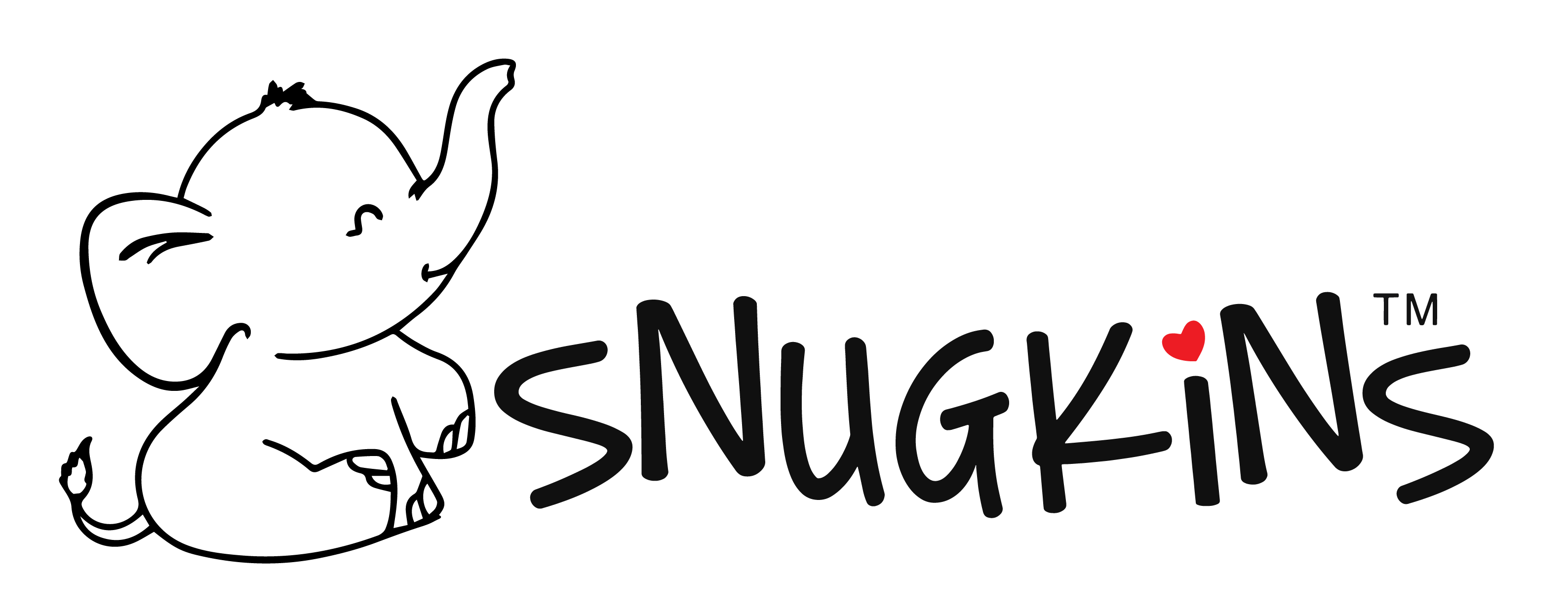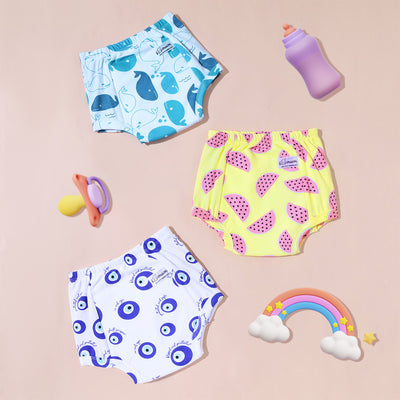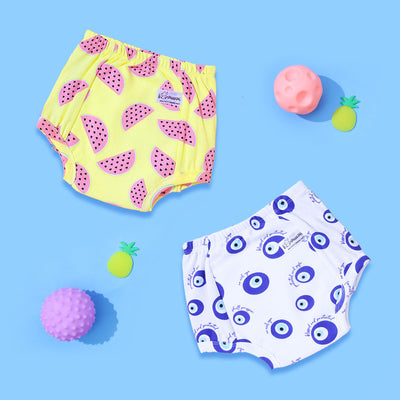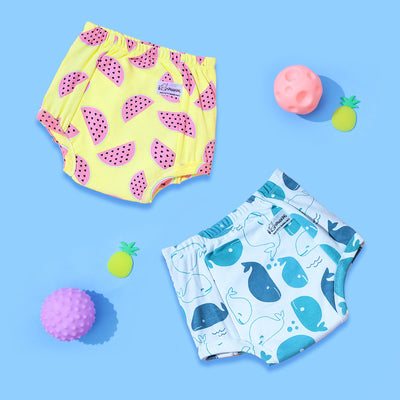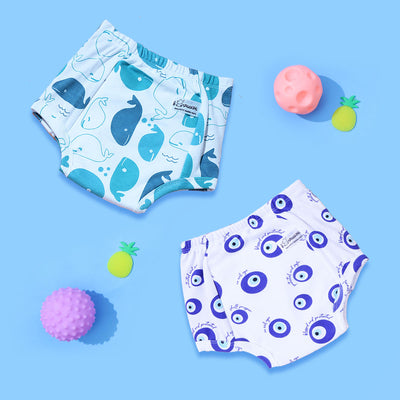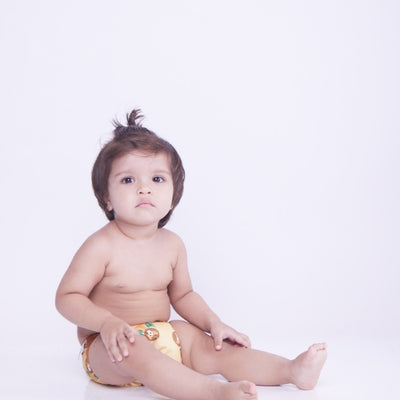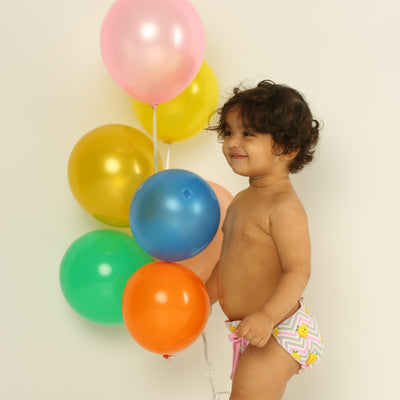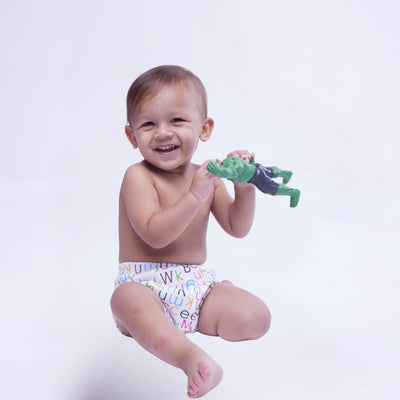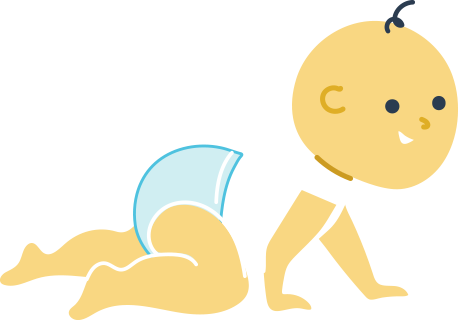10 Clear Signs Your Toddler Is Ready to Start Potty Training
Potty training is one of the biggest developmental milestones in early childhood - not just for toddlers, but for parents too. It marks a shift toward greater independence, communication, and responsibility for your little one. It’s normal for parents to wonder: What is the best age for potty training? While there’s no one-size-fits-all answer, most children begin showing signs of readiness sometime between 18 months and 3 years old. Some may start earlier, others later - and that’s perfectly okay.
The truth is that the age for potty training is just a general guideline. What truly determines success is not the number on the calendar, but whether your child shows signs of physical readiness (like bladder control), cognitive understanding (knowing what the potty is for), and behavioural cues (like showing discomfort in a wet diaper or hiding to poop). Forcing potty training too early - before your toddler is emotionally and physically prepared - can lead to power struggles and setbacks.
Rather than focusing solely on age, it’s essential to watch for clear signs that your child is ready. Below, we break down the top 10 signs that your toddler may be prepared to start their journey toward toilet independence. When these cues begin to appear, you can introduce potty training pants, padded underwear, or a child-friendly potty seat to ease into the process gently and confidently.
1. Stays Dry for Longer Periods
One of the first signs your toddler may be ready for potty training is staying dry for two hours or more during the day or waking up from naps with a dry diaper. This shows their bladder muscles are developing, and they’re gaining control over when they pee. You might also notice fewer but heavier wet diapers, which is a good sign of growing awareness. Switching to padded underwear or potty training pants at this stage can help reinforce this progress. These options allow toddlers to feel when they’re wet, making it easier to connect the sensation with using the potty. It's also a great time to begin potty training with pants, helping your child transition from diapers to underwear more naturally. Consistent dry periods are a strong green light to start building potty habits.
2. Regular, Predictable Bowel Habits
If your toddler tends to have bowel movements around the same time each day, it’s a strong indicator that they’re developing a healthy digestive rhythm. This kind of consistency makes it much easier to introduce potty training, as you can plan potty time around their natural schedule. Predictable poop patterns also help your child begin to recognise the urge to go, which is an important step in toilet training. You can use this routine to gently guide them to sit on the potty at the expected times, creating a positive association. During this stage, switching from diapers to potty training pants or padded underwear can encourage awareness of bowel movements. A consistent routine builds confidence and reduces the likelihood of accidents.
3. Shows Awareness of Pee or Poop
If your toddler starts to show signs they’re about to pee or poop - like hiding behind furniture, pausing play, squatting, or tugging at their nappy - it means they’re becoming aware of what’s happening in their body. Some children might even tell you they’ve gone or are about to go. This growing body awareness is a crucial part of potty training readiness, as it shows they can recognize the urge before or while it happens. At this point, introducing padded underwear or potty training pants can help them connect the feeling of needing to go with using the toilet. Recognizing these signals is a big step toward building control and creating healthy bathroom habits.
4. Discomfort with Wet or Dirty Diaper
If your toddler starts pulling at their diaper, asking for a change, or showing clear signs of discomfort after peeing or pooping, it’s a strong signal they’re ready to move on. This growing dislike for the feeling of being wet or soiled means they’re becoming more aware of their hygiene and body. It also shows a desire for independence, one of the key emotional signs of potty training readiness. At this stage, many toddlers benefit from transitioning to padded underwear or potty training pants, which are less absorbent than diapers. These help them feel wetness more directly, encouraging quicker learning. Choosing soft, toddler-friendly options - like those from brands such as Snugkins -can make this transition smoother and more comfortable.
5. Shows Interest in the Potty or Bathroom
Many toddlers become curious about what happens in the bathroom. You might notice your child following you in, trying to flush the toilet, or asking where the pee and poop go. This kind of curiosity is a strong sign they’re mentally getting ready to use the toilet themselves. They may also want to try sitting on the potty - even fully clothed - or pretend to wipe with toilet paper. This is a great time to introduce them to the idea of potty training with pants or let them try on padded underwear to feel more involved. When your child shows interest, it’s a good cue to start building a simple potty routine.
6. Can Follow Simple Directions
Potty training involves several small tasks, like sitting on the potty, wiping properly, flushing, and washing hands. If your toddler can understand and follow these basic instructions, it shows they’re ready to take part in a simple bathroom routine. This ability helps them feel more in control and makes the process smoother for both of you.
7. Can Manage Dressing and Undressing
Being able to pull pants or underwear up and down independently is a key skill for potty training. Whether it’s regular clothes or training pants, this ability gives toddlers more control and speeds up bathroom visits. Practicing this skill with easy-to-wear, stretchy pants helps them feel more independent.
8. Communicates the Need to Go
Whether by using words, gestures, or facial expressions, toddlers who can tell you when they need to pee or poop are ready to begin potty training. Clear communication helps prevent accidents and allows caregivers to respond quickly. Encouraging your child to express their needs builds trust and success in the process.
9. Can Sit Still for a Few Minutes
Potty training often means sitting calmly on the potty, even if nothing happens right away. Toddlers who can stay seated for a few minutes, perhaps entertained with a small book or toy, are more likely to succeed. This patience helps them recognize their body’s signals and builds good bathroom habits.
10. Walks and Moves Steadily
Being able to walk, run, and change direction confidently is important during potty training. When your toddler can move quickly and steadily to the bathroom, they’re less likely to have accidents. This physical independence boosts their confidence and supports a smoother potty training journey.
Final Thoughts
Potty training is a major milestone, and understanding your toddler’s readiness can make the process smoother for both of you. Instead of focusing solely on age, pay attention to the signs - they're the best indicators of when to start. Along with patience and consistency, the right potty training essentials can make a big difference. Comfortable, easy-to-wear options like padded underwear and potty training pants can help toddlers feel confident and independent. Brands like Snugkins, known for their thoughtfully designed training products, offer parent-approved solutions that support a gentle and child-friendly transition. With the right approach, your little one will be diaper-free before you know it

